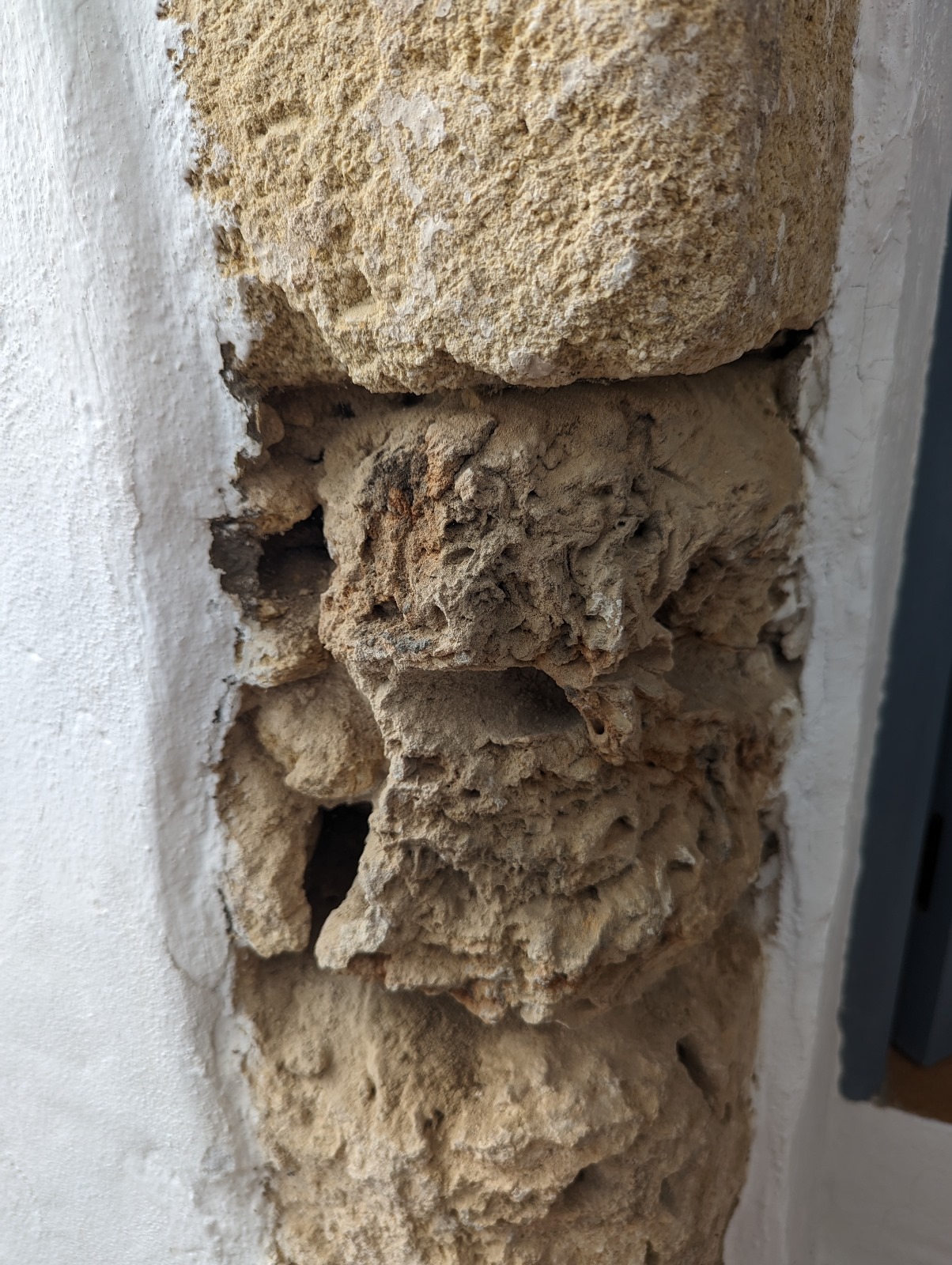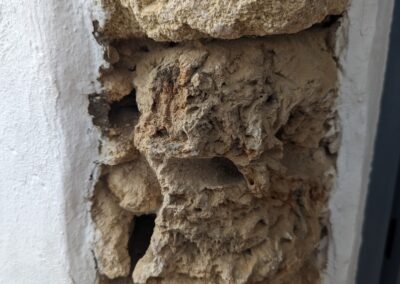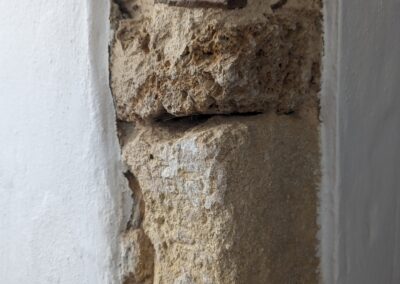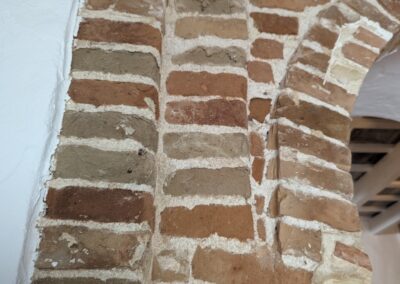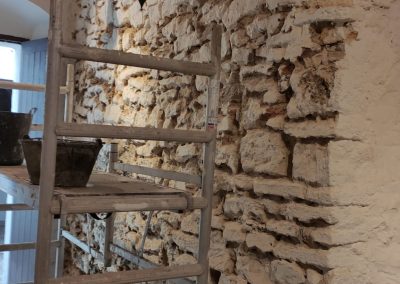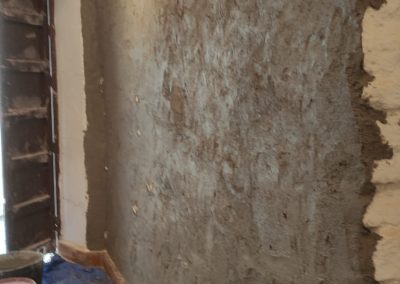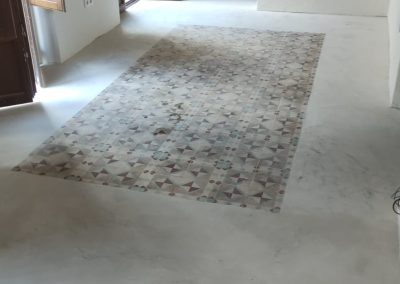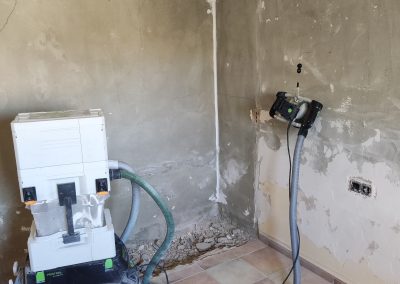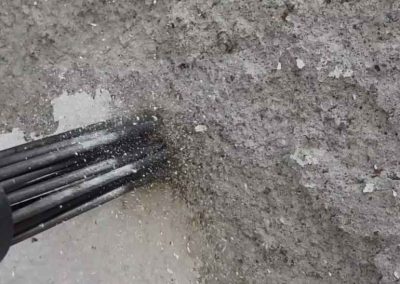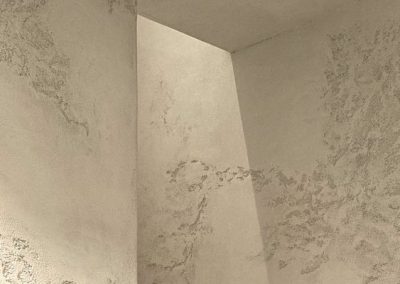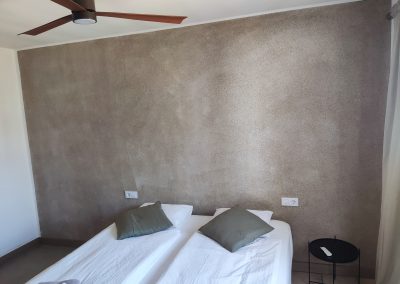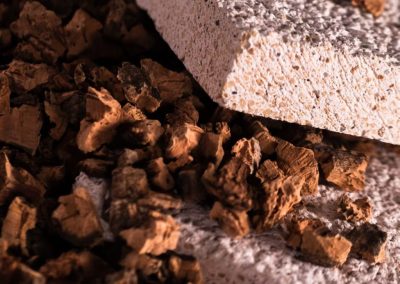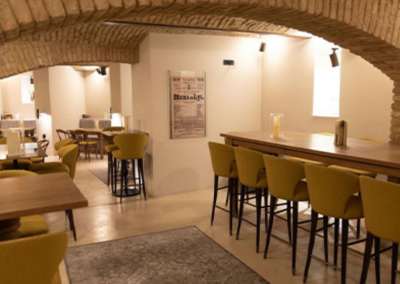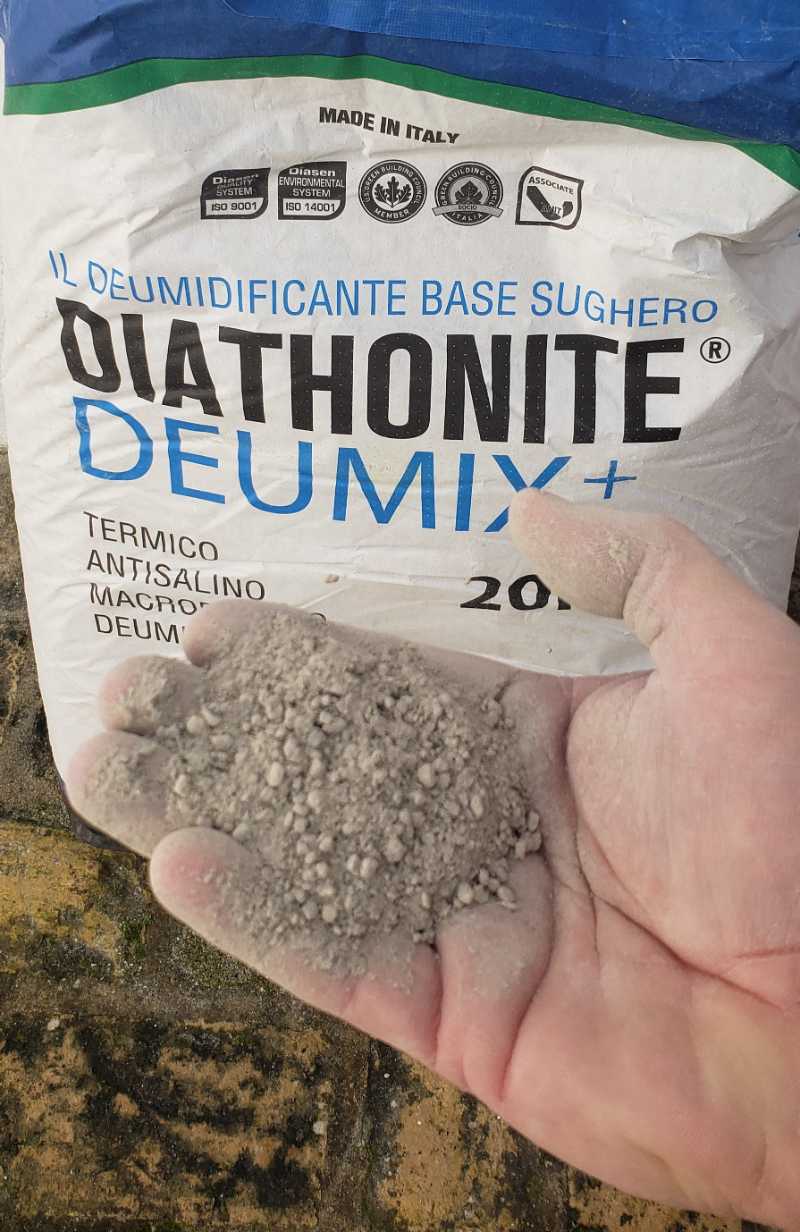Historic buildings are not only charming and full of character, but they are also a link to the past, showcasing the architectural and cultural heritage of a bygone era. However, these magnificent structures often come with a hefty price tag when it comes to maintenance and upkeep. In this article, we will explore the factors that contribute to high maintenance costs on historic buildings, and how these challenges can be overcome to ensure the preservation and longevity of these architectural treasures.
Common Causes of Deterioration in Historic Buildings
One of the main culprits behind the deterioration of historic buildings is water damage. Whether it’s due to bad previous restorations using the wrong materials, leaks in the roof or inadequate drainage systems, water wreaks havoc on the structural integrity of these structures. The constant exposure to moisture leads to rot, decay, and the formation of mould, which not only compromises the aesthetics of the building but also poses a threat to the health of its occupants due to constant repainting to cover up the mould especially when cement has been used on natural stone.
Another factor that contributes to the high maintenance costs of historic buildings is the presence of old infrastructure. Outdated electrical systems, plumbing, and heating systems not only require frequent repairs but also pose a fire hazard in some cases. In the case of properties that are rented, laws require fire doors and secondary exit doors in some cases. Upgrading these to meet modern safety standards is essential, but it comes at a considerable cost.
The incompatibility of modern materials with the original construction of historic buildings is another pressing issue. When incompatible materials are used in restoration or renovation projects, it can lead to accelerated deterioration, as the building’s original features and materials are not given the opportunity to “breathe.” This lack of breathability can cause moisture to become trapped within the walls, causing them to deteriorate rapidly.
Historic buildings are often made of delicate materials such as lime mortar, timber, or plaster, which are susceptible to damage if not handled with care. Any damage to the historic fabric needs to be repaired promptly and using traditional techniques to ensure that the building retains its original character and authenticity.
Lack of reversibility is another factor that contributes to high maintenance costs. Reversible conservation methods allow for future changes or modifications to be made without causing irreversible damage to the building. When these methods are not applied, it becomes challenging and expensive to rectify any mistakes that may have been made during the restoration process.
Furthermore, the loss of historic integrity due to alterations that do not respect the building’s original design or historical significance can drive up maintenance costs. Straying from the building’s original features and architectural elements can compromise its cultural and historical value, making it more challenging and costly to restore.
Lastly, energy efficiency upgrades, while important for reducing the environmental impact of historic buildings, can also contribute to high maintenance costs. Many of these buildings were not designed with energy efficiency in mind, and retrofitting them to meet modern energy standards requires careful planning and execution to ensure the building’s historic character is preserved.
Moreover, the impact of urbanization on historic buildings cannot be overlooked. As cities expand and modernize, historic buildings often find themselves surrounded by taller, more contemporary structures. This change in the urban landscape can lead to increased exposure to air pollution, which can accelerate the deterioration of historic materials. Additionally, the increased foot traffic and vibrations caused by nearby construction projects can further compromise the stability and structural integrity of these buildings.
Furthermore, the passage of time itself poses a significant challenge to the preservation of historic buildings. Over the years, natural wear and tear occur, causing the gradual decay of materials and the weakening of structural elements. Factors such as temperature fluctuations, freeze-thaw cycles, and exposure to ultraviolet radiation can all contribute to the ongoing deterioration of these architectural treasures.
Additionally, the lack of proper maintenance and regular inspections can exacerbate the issues faced by historic buildings. Without routine checks and timely repairs, minor problems can escalate into major structural issues, requiring more extensive and costly interventions. Regular maintenance, including cleaning, repointing, oiling wood and monitoring the building’s condition, is crucial to ensure the longevity and preservation of these valuable historical assets.
Role of Building Materials in Maintenance Costs
The choice of building materials used in the maintenance and restoration of historic buildings significantly impacts maintenance costs. Using high-quality and durable materials that match the original building materials is crucial for long-term stability and reduced maintenance requirements. Additionally, certain materials, such as lime mortar, are more compatible with traditional construction methods, helping to reduce the risk of moisture-related issues.
Preserving historic buildings often involves a delicate balance between maintaining authenticity and ensuring structural integrity. For instance, sourcing reclaimed bricks or tiles can add character to a restoration project while also reducing the environmental impact of producing new materials. These reclaimed materials may come with a higher price tag due to their scarcity and unique qualities, but they contribute to the historical accuracy of the building.
However, the cost of these traditional materials can be higher than modern alternatives. Striking a balance between cost-effectiveness and preservation is essential. Investing in high-quality materials may require a larger upfront cost, but it can save on long-term maintenance expenses.
One of the highest none non-structural costs in restoring old buildings when preparing walls in southern Spain is removing cement and plastic paint before the walls can be treated. Generally, it is not recommended to use cement as it is less porous and more rigid than the original building materials (even at a 1 to 5 ratio). Historic buildings were often constructed with more porous and flexible materials like lime mortar, stone, and brick. Cement is much harder and less permeable, which can cause issues with moisture and vapour transmission leading to structural issues.
For these reasons, most experts recommend using traditional, lime-based mortars and materials when restoring historic buildings, as they are more compatible and less damaging to the original fabric. Cement should only be used with great care and consideration for its potential negative impacts on historic structures.
Plastic paints, such as acrylic paints, should also not be used in historic buildings. Plastic paints are not breathable, historic buildings were constructed with porous materials like lime plaster, stone, brick, and wood that allow air and moisture to flow. Plastic paints form a non-porous barrier that traps moisture inside the walls, leading to damp issues and accelerated deterioration of historic materials which are extremely expensive to remove when applied to cement on historic buildings.
For these reasons, experts recommend using traditional, breathable paints like limewash, lime paint, clay paints, or linseed oil paints when restoring historic buildings. These paints are more compatible with historic materials, allow moisture to pass through, and are more environmentally friendly than modern plastic paints.
Balancing Preservation with Modernization Efforts
Preserving the historical character and integrity of a building can sometimes clash with the need for modernization. Striking a delicate balance between these two objectives is crucial. While it’s essential to preserve the building’s unique features and historical significance, certain modifications may be necessary to ensure the building can meet contemporary safety and accessibility standards. Achieving this balance requires careful planning and expert guidance to avoid compromising the building’s cultural value while still meeting the needs of modern occupants.
When considering the preservation of a historic building, it is important to understand the significance of its architectural style and materials. For example wooden beams and other intricate woodwork and decorative elements that require specialised maintenance to prevent deterioration. By using traditional craftsmanship and materials in restoration efforts, it is possible to retain the authenticity and charm of these heritage structures.
Furthermore, modernization efforts can also present opportunities to enhance the sustainability of historic buildings. Implementing energy-efficient technologies, such as solar panels or insulated glazing, can reduce the environmental impact of these structures while preserving their historical value. By integrating sustainable practices with preservation initiatives, it is possible to ensure the longevity of historic buildings for future generations to appreciate and enjoy.
Impact of Weathering and Environmental Factors
Historic buildings are not only architectural marvels but also time capsules that hold stories of the past. The intricate details and craftsmanship of these buildings are a testament to the skills and techniques of bygone eras. However, these structures are constantly exposed to the elements, facing the relentless forces of nature that can accelerate their deterioration over time.
Rain, with its acidic properties, can slowly erode the surfaces of historic buildings, causing discolouration and weakening of the materials. Wind, especially in coastal areas, can carry abrasive particles that gradually wear down the exterior surfaces, leading to a loss of intricate details and features. Temperature fluctuations, from freezing cold to scorching heat, can cause materials to expand and contract, putting stress on the building’s structure and potentially causing cracks and fractures.
Pollution, a by-product of urbanisation and industrialisation, can also have a detrimental impact on historic buildings. The deposition of pollutants such as sulphur dioxide and nitrogen oxides can react with the building materials, accelerating their decay and disintegration. Regular inspections and maintenance are therefore essential to identify and address any weather-related damages promptly, preserving the integrity and beauty of these architectural treasures for future generations to admire and cherish.
Importance of Regular Inspections and Maintenance
Regular inspections and maintenance play a vital role in preventing or addressing potential issues before they escalate into costly repairs. Inspections can help identify any signs of deterioration, water damage, pest infestations, or structural weaknesses. Early intervention allows for timely repairs and ensures that maintenance costs remain manageable in the long run.
Furthermore, regular inspections provide an opportunity to assess the efficiency of systems within a property. For instance, wooden beams should be checked for rot and insects, as well as being oiled regularly. By conducting routine checks, property owners can identify any inefficiencies or malfunctions early on, leading to improved energy efficiency and potentially lower utility bills.
Moreover, scheduled maintenance not only enhances the longevity of building components but also contributes to the overall safety of occupants. By addressing minor issues promptly, such as loose handrails or cracked pavements, the risk of accidents or injuries can be significantly reduced. This proactive approach to maintenance demonstrates a commitment to providing a safe and comfortable environment for all individuals who interact with the property.
Innovative Techniques for Cost-Effective Maintenance
The preservation field is constantly evolving, and innovative techniques are being developed to make historic building maintenance more cost-effective. From advanced monitoring systems to smart energy management solutions, technology plays a significant role in reducing maintenance costs while preserving the building’s historical character.
Additionally, adopting sustainable practices and embracing environmentally-friendly solutions can help reduce long-term maintenance costs. From energy-efficient upgrades to water conservation measures, these sustainable practices not only benefit the environment but also contribute to significant cost savings.
Moreover, another key aspect to consider in cost-effective maintenance is the use of traditional building materials and techniques. By understanding the historical construction methods and materials used in a building, maintenance professionals can ensure that repairs and renovations are carried out in a way that respects the building’s heritage while also being cost-effective in the long run.
The Future of Preserving Historic Buildings: Sustainability and Longevity
Preserving historic buildings for future generations involves embracing sustainability and ensuring their long-term durability. This includes incorporating green building practices, using renewable energy sources, and implementing innovative methods to minimize the environmental impact of maintenance and restoration.
Furthermore, fostering a sense of community ownership and engagement is crucial for the preservation of historic buildings. Educating the public about the historical and cultural significance of these structures can help generate support and encourage responsible maintenance practices.
While the maintenance costs associated with historic buildings may seem daunting, they are a small price to pay for the preservation of invaluable cultural treasures. With careful planning, strategic investments, and a commitment to balancing preservation with modern needs, historic buildings can continue to stand proud, serving as a testament to our past and inspiration for the future.
One key aspect of ensuring the sustainability of historic buildings is the use of traditional building materials and techniques. By employing methods that have stood the test of time, such as lime mortar for masonry or timber framing, preservationists can maintain the authenticity and integrity of these structures while also benefiting from their durability and eco-friendliness.
At ECS we have a long history of working with natural building materials including lime, clay, and cork. We also supply wood oils and traditional wooden beams to replace damaged beams to companies and individuals embarking on historic building restorations.
Understanding the Economics of Historic Building Maintenance
Preserving historic buildings is not just a matter of cultural importance; it also has economic benefits. Historic buildings attract tourists as seen in many towns and cities in Andalucia like Vejer Tarifa, Ronda and Granada to name but a few. The boost to local economies contributes to the overall character and identity. However, maintaining these buildings can be a significant financial burden for owners and communities.
Government grants, tax incentives, and charitable funding are some of the financial resources available to help offset the high maintenance costs associated with historic buildings. Still, it is often down to the owner. Partnering with preservation organizations and seeking expert advice can help navigate the complexities of securing funding and managing the economic aspects of maintaining these valuable structures which work well in bigger cities.
Furthermore, the economic impact of historic building maintenance extends beyond direct funding sources. Studies have shown that investing in the preservation of historic buildings can lead to job creation in various sectors, such as construction, tourism, and heritage management. This ripple effect of economic activity can stimulate growth in local businesses and support a sustainable economy.
Moreover, the value of historic buildings goes beyond monetary considerations. These structures often hold intangible cultural significance, connecting communities to their past and preserving unique architectural styles and craftsmanship. By investing in the maintenance of historic buildings, we not only safeguard tangible heritage but also ensure the continuity of stories and traditions for future generations to appreciate and learn from.
What is classified as a historic building in Spain?
In Spain, a historic building is classified based on various criteria related to its architectural, aesthetic, historical, social, and cultural significance. The classification of historic buildings in Spain includes different categories such as:
– Emerging Value (E): Buildings that play a dominant role due to their aesthetics, history, scale, or special significance to the community.
– Architectural Value A (VAR A): Buildings that are constitutive in the morphology of an area due to their function, aesthetic and historical characteristics, or social significance.
– Architectural Value B (VAR B): Buildings that are representative of an era or style due to their aesthetic and historical characteristics or social significance.
– Environmental Value: Buildings that contribute to the quality of urban space through their scale, materials, location, volume, and relationship with public space.
These classifications are crucial in determining the preservation and conservation efforts for historic buildings in Spain, ensuring their cultural and architectural heritage is safeguarded for future generations.
Regulations in Spain?
In Spain, the restoration of historic buildings is governed by stringent laws and regulations aimed at preserving the country’s cultural and architectural heritage (however they are often not enforced). Some key laws surrounding the restoration of historic buildings in Spain include:
1. Spanish Historical Heritage Law: Historic properties in Spain, classified as “Bien de Interés Cultural” (BIC), are protected under this law to conserve the country’s cultural and architectural heritage. Any alterations, renovations, or restorations to these properties must adhere to strict guidelines and typically require prior approval from local authorities.
2. Ministry of Education, Culture, and Sport Guidelines: Before commencing any restoration work on a historic property, approval must be sought from the Ministry of Education, Culture, and Sport. Renovations often need to be overseen or executed by specialists in historic preservation to ensure authenticity and compliance with regulations.
3. Local Planning Regulations: There are strict planning regulations in Spain that must be followed when renovating historic buildings. Failure to adhere to these rules can result in fines or even orders to demolish the property.
4. Building Licenses: Depending on the scope of the restoration work, different types of building licenses may be required. For example, a “Licencia de Obra Mayor” is needed for major structural changes, while a “Licencia de Obra Menor” is required for minor renovations.
5. Documentation Requirements: When renovating a historic building in Spain, various documentation is needed, including project plans, certificates from competent technicians, payment forms, and other legal documents to ensure compliance with regulations.
These laws and regulations are in place to ensure that the restoration of historic buildings in Spain is carried out in a manner that preserves their cultural and architectural significance for future generations.
Approval process
To obtain approval for restoring a historic building in Spain, the following process must be followed:
1. Determine the building’s classification: Historic buildings in Spain are classified as BIC (Bien de Interés Cultural) properties, which are protected by the Spanish Historical Heritage Law. The level of protection and approval required depends on the building’s specific classification[1].
2. Consult with local authorities: Before commencing any renovations, expats must seek approval from the Ministry of Education, Culture, and Sport. This typically requires submitting detailed plans and proposals for the restoration work[1].
3. Engage specialists in historic preservation: Renovations to BIC properties often need to be overseen or executed by specialists in historic preservation, such as members of the Spanish Committee of ICOMOS (International Council on Monuments and Sites), to ensure authenticity and compliance with regulations[1].
4. Obtain necessary permits: Depending on the scope of the restoration, various permits may be required from local authorities. This can include building permits, permits for changes to the facade, and permits for public access during certain periods[1].
5. Consult with the Association of Land and Mercantile Registrars of Spain: Prospective buyers should consult with this organization to obtain detailed information on any encumbrances or legal requirements associated with the property before finalizing the purchase[1].
6. Engage a local property lawyer: Hiring a lawyer familiar with historic buildings can guide expats seamlessly through the acquisition and restoration process, ensuring full compliance with Spanish heritage preservation laws[1].
7. Investigate potential funding sources: There may be financial incentives or grants available from regional governments or institutions like the Europeana Foundation for those looking to restore listed buildings[1].
By following this process and adhering to the strict guidelines set forth by the Spanish Historical Heritage Law, expats can successfully navigate the restoration of historic buildings in Spain while preserving the country’s rich cultural and architectural heritage.
Conclusion
Preserving historic buildings is a complex and multifaceted challenge that requires a delicate balance between maintaining authenticity, ensuring structural integrity, and adapting to modern needs. The high maintenance costs associated with historic buildings can be attributed to various factors, including water damage, incompatible materials, and the passage of time itself. However, by embracing innovative techniques, sustainable practices, and traditional building materials, it is possible to reduce maintenance costs while preserving the cultural and historical significance of these architectural treasures.
Regular inspections and proactive maintenance are essential to identify and address potential issues before they escalate into costly repairs. By investing in high-quality materials and employing traditional craftsmanship, property owners can ensure the longevity and authenticity of historic buildings. Furthermore, integrating modern technologies, such as energy-efficient upgrades and smart monitoring systems, can enhance sustainability and reduce long-term maintenance expenses.
Preserving historic buildings is not only a matter of cultural importance but also has significant economic benefits. These structures attract tourists, boost local economies, and contribute to the overall character and identity of a place. By partnering with preservation organizations and seeking expert guidance, property owners can navigate the complexities of securing funding and managing the economic aspects of historic building maintenance.
As we look to the future, the preservation of historic buildings must embrace sustainability and ensure their long-term durability. This involves incorporating green building practices, using renewable energy sources, and fostering a sense of community ownership and engagement. By educating the public about the significance of these structures and encouraging responsible maintenance practices, we can ensure that historic buildings continue to stand proud, serving as a testament to our past and inspiration for generations to come.

